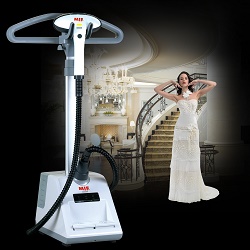Causes of water stagnation at the bottom of the dishwasher
Dishwashing machines use water many times: at first it is sprayed, then filtered when removed and re-fed to the recirculation from the sump. At the end of the washing process, the contaminated liquid must be completely removed, but there are occasional breakdowns when the dishwasher does not drain. Find the cause and fix the problem.
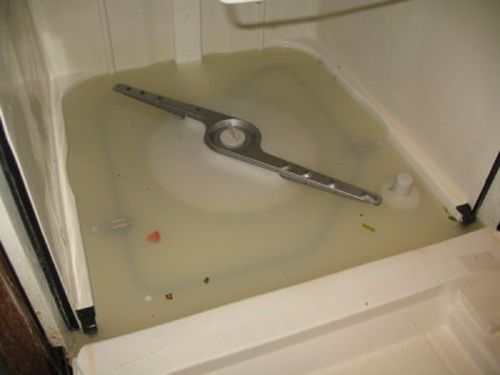
Content
Principle of operation of the device
Water is pumped through inlet valve - at the dishwasher it is of single type - then it fills the tank to a certain level and is pumped recirculation pump in rocker arms. Then it comes under pressure, creating a circular motion of the rocker, due to which the removal of food debris.
In order to properly clean the dishes, the water is heated with a special element to the maximum temperature set for this model, then it is collected at the bottom of the machine, filtered and fed to a new work cycle.
The drainage pump removes all the liquid immediately after washing the dishes from the machine to the sewer system, and if the used water continues to stand at the bottom, the system is clogged.
A special sensor monitors the water level in the tank or pressostatThe solenoid valve is responsible for various additives in salt softening water, for example. The powder and rinse are added to the working chamber as needed from the dispenser, which is located on the machine door.
The pressure on the sensor comes from two places:
- During the water in the main tank.
- Level control in the pan when draining dirty water.
Central board uses the received information in various ways, it is here that signals come about all the occurring faults.
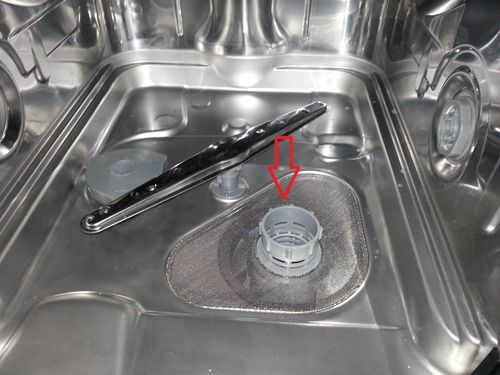
Possible reasons
Problems with draining the water in the dishwasher often arise because of a clogged filter or if the drain hose is bent - they can be solved without the involvement of a specialist.If a specific part of the machine or system breaks down, then you cannot do without the help of a master.
Why does water remain in the dishwasher? The reason may be different:
- clogging of coarse or fine filters;
- elementary bend drain hose;
- clogged drainage system;
- breakage or clogging of the drain pump;
- water level sensor failure;
- faulty software module.
Clogged filters
A common cause of the fact that water in the dishwasher accumulates at the bottom, is the clogging of the filter, so we first check the system is different cleaning. In the presence of multiple food debris on the dishes, the filters get clogged up pretty quickly and need to be cleaned. If you have a Bosch car, then you are lucky and there will be no big problems when cleaning the filtering system.
Council mistress! To avoid clogging up the machine, you need to collect the leftover food from the plates before placing them in the baskets; this will prolong the uninterrupted period of work of your assistant.
The filter housing is located on the bottom of the machine, it is very easy to remove. Then clean it under running water and reinstall it. Fill the bottom with 2-3 glasses of water and turn on bilge pump - the water goes away, which means that the fault has been eliminated.
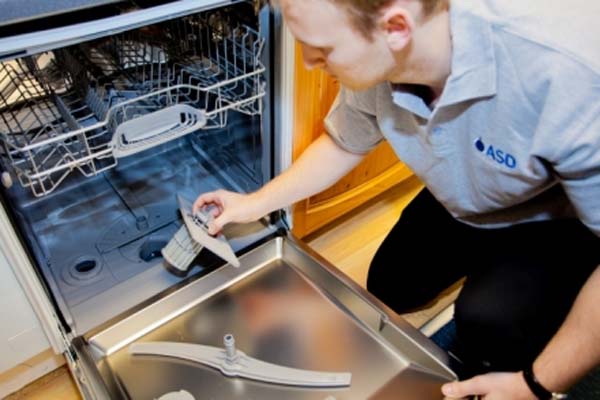
Filter check
Clamped or plugged drain hose
It is located at the rear of the unit and connects the drainage system with the sewage system. When it is transferred, the water will not merge, since in principle it has nowhere to go. Turning off the machine from the network, tilts from the wall, visually inspect the hose, eliminate the detected fault.
There are cases hose cloggingwhen small debris during long operation clogs it from the inside, so the water does not leave the car. We disconnect the hose from the sewage system and drop it into the prepared bucket. After turning on the dishwasher to drain, the water from it should go under pressure - this means that the blockage is located at the place where the hose is connected to the sewer. If the pressure is weak, then look for the plug inside the hose and clean it.
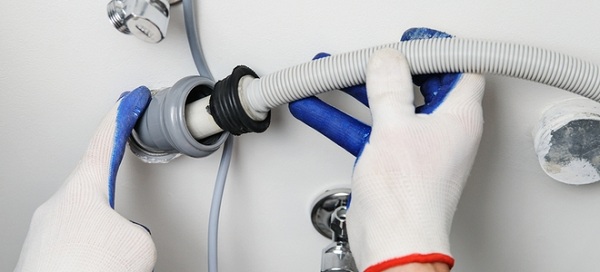
Dishwasher drain hose
Drainage system and drain pump
The system is checked in the same way as a hose: there is pressure - everything works, a weak stream of water - must be cleaned. With a pump it is more difficult - in some machines it is in a hard-to-reach place, only specialists can dismantle itIn the Bosch dishwasher, the pump is in a convenient location and disassembly is possible in the home. We check the pump for clogging and clean it, then the operation is checked inner impellerFor this we use a pencil. All work must be carried out with the utmost care so as not to damage the impeller and not to injure your hands with small fragments from dishes that may cause clogging.
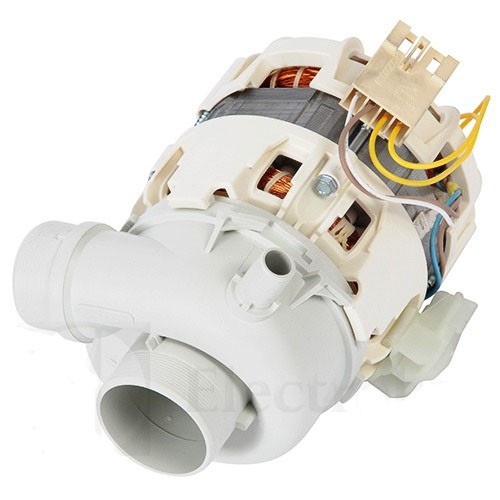
Dishwasher circulation pump
The pump mechanism is the same as on the washing machine:
- asynchronous motor with two coils;
- magnetic rotor;
- cruciform impeller pushes water due to strong rotation;
- powered by a standard mains voltage of 220 V.
Then we put everything back and check if the pump can pump out water, if so, the repair is complete. The problem can be much more serious in the case when there is still water at the bottom of the car - you cannot do without a master here.
Failure of the pressure switch
If it fails to pump out the water, a level sensor may be to blame. To check this, you must dismantle pressure tapping chamber - small plastic box, mounted bottom up.Then purge the transparent tube, connect it back and blow it into it again - if you hear a click, the sensor works fine.
You can call electrical circuit sensorif you know how to do it and there is an appropriate device. After all the manipulations, the water should go without problems.
Electronic system failure
We have reviewed the main ways of how to drain the water in case of various faults from the dishwasher, but there are other reasons why water may remain at the bottom of the machine - for example, a fault software module. It controls the processes for which the machine is designed; it is this node that gives commands to perform its functional duties with all systems. If it breaks, malfunctions can occur in the effective operation of household appliances.
When, after the end of the working cycle, the water remains at the bottom, and you have checked all possible failure modes, you urgently need to diagnose the module in the service center.
Most modern household appliances have displays on which, in the event of a malfunction, are highlighted error codes - the instruction manual in detail decrypts them and gives recommendations for troubleshooting.If something is not found - you can always search the Internet, where there are almost all the answers to frequently asked questions.

/rating_off.png)






